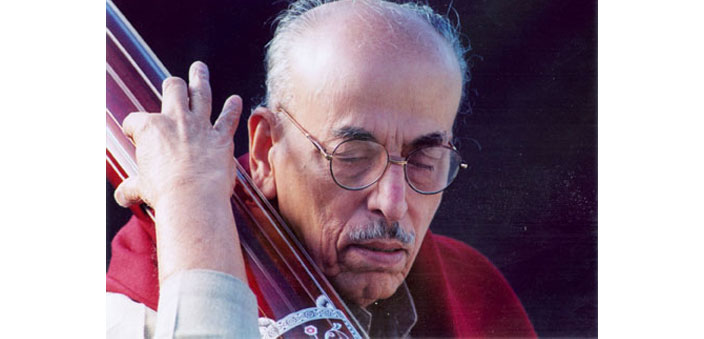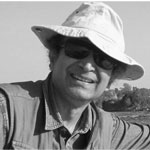Recently, this writer was entranced by a fabulous Kadarpiya thumri in the raga Kafi sung by Pandit Indudhar Nirody. The Mysore-based 81-year old maestro had recorded it in a set of CDs appropriately called Samarpan (Dedication), a fine tribute to the legendary musicologist Pandit Vishnu Narayan Bhatkhande.
Samarpan is a truly monumental project that took six years and was entirely self-financed. This encompassed, hold your breath, all the 2,000 bandishes contained in that century-old-six-volume classic called ‘Kramik Pustak Malika’, which had been compiled by Pandit Bhatkhande (1860-1930).
The Samarpan audio clips have harmonium and tabla accompaniments by Pandits Veerabhadraiah Hiremath, Ramesh Dhannur and Bheemashankar Bidnoor.
Learning the Kafi
Now to get back to the Kafi, I tried to learn the piece by playing the bandish again and again. Only then did I realise the hidden beauty of this seemingly simple piece composed by Miya Kader Mirza. (He was a minister at the redoubtable aesthete-composer Nawab Wajid Ali Shah’s Lucknow court). How bewitchingly tuneful Pandit Nirody made it sound. As Maihar sarod maestro Pandit Rajeev Taranath said once, “Music, like painting, is an art of immediacy. Pandit Bhatkhande’s monumental work was waiting for this transformative touch of immediacy. With Pandit Indudhar’s voice reanimating the compositions, the songs have got a soulful touch”.

To cut a long litany short, only with determined effort did I manage to learn Kadarpiya’s Kafi, which complains about flashing thunder and pouring rains that make the night seem interminable. The lover’s song seems singularly appropriate to greet the arrival of the monsoon this month.
Imagine how difficult this exercise might have been had I tried it in earlier times which lacked modern amenities such as recorders, computers and the internet which we take so much for granted today.
Those were the days when one learned by the time-honoured sina-ba-sina or face-to-face method from the guru to shishya.
That’s when the great lawyer-turned-musicologist Bhatkhande got hold of all those pieces and published them in an annotated form for the masses in his multivolume ‘Pustak Malika’ series. Bhatkhandeji had gathered the compositions with a persistence and tenacity worthy of a Machiavelli or a Narad Muni from tight-fisted ustads, irascible pundits and condescending connoisseurs from all over the country.
To democratise the dissemination of this most melodious of our legacies, the great organiser had devised a notation or sargam system of his own to unlock their melodic content. He had also composed over 300 of his own pieces and signature tunes (Lakshangeet) to make the ragas easy to remember and render.
Says Pandit Nirody of his great-grand-guru, “We can only barely fathom the amount of knowledge he had. It would not be possible for us to scale the heights nor digest that amount of information in several lifetimes! And he accomplished it all in his lifetime!”
Although in his own times, Bhatkhande’s work drew mixed responses from the musician fraternity, today his work is widely admired, both by scholars and musicians, because it recorded for posterity compositions that may have vanished had they been restricted to oral transmission alone. “Thanks to Panditji’s pioneering efforts, knowledge that was confined to hereditary musician families opened up to the public at large”, says Sumana Ramanan in her online appreciation of Pandit Nirody’s achievement.
Samarpan the book and two CDs, send a cheque of Rs 3,000 (for addresses in India) or Rs 4,500 (for addresses abroad)
To
Swarasankula Sangeetha Sabha #1226 3rd Cross, Gange Raste, Kuvempungar, Mysore 570023.
Pandit Indudhar Nirody’s own feat turning Bhatkhande’s vast vidya from annotated and symbol-coded avatar into a computer-friendly format, is revolutionary in its own right. Recognising the scope and width of its potential impact, the Sangeet Natak Akademy had awarded its prestigious award upon Pandit Nirody for his life-time achievement of dedicated service to the cause of Hindustanti classical music. President Pranab Mukherjee will do the honours at Rastrapati Bhavan soon.
However, with characteristic humility, Pandit Nirody acknowledges the contribution of his fellow artistes. “Everyone involved in the project was committed,” he says. “They knew its importance. The recordist, a Carnatic violinist, A.P. Srinivas, accommodated us according to our convenience. A lot of credit goes to him”.
The staggering contribution
Incidentally, Pandit Nirody retired as a high-ranking honcho with the Life Insurance Corporation of India after 40 years of service, and settled in the state of his birth – Karnataka. Working almost daily for six years, the Mysore-based musicians completed the mega project.
Earlier, speaking at a felicitation function held at the Y. B. Chavan Centre in South Mumbai, noted sitarist Pandit Arvind Parikh called it, “an epic moment not only for the pedagogy but also connoisseurship of one of the world’s greatest and oldest classical musical traditions: All the compositions painstakingly collected by that genius grammarian and musicologist have now become freely available for students and scholars alike thanks to the silent, but monumental work by Pandit Nirody and his inspired bunch of colleagues”.
For the more than four decades that he lived in Mumbai, till his retirement in 1995, Pandit Nirody studied music with other stalwarts such as Gurudutt Heblekar, Dinkar Kaikini and Chidandand Nagarkar, besides Pandit Ginde and Bhat. His father had moved from Udipi in southwest Karnataka to Mumbai when his son was 15 so that he could learn from top-notch musicians.
The project on recording Pandit Bhatkhande’s repertoire originally began at ITC’s Sangeet Research Academy under Acharya K.G. Ginde. However, Pandit Ginde, a grand-disciple of Pandit Bhatkhande himself, and a guru of Pandit Nirody, passed away in 1994 and the project got stalled. Pandit S.C.R. Bhat, who was also Pandit Nirody’s guru, carried it a little further. But it remained incomplete.
“I strongly felt his work had to be taken up again and brought to fruition,” Pandit Nirody said. “With the help of the right people and selfless colleagues, we started recording. I would say that it was due to the blessings of my gurus that this project has now been completed successfully”.
As the chairman of Popular Prakashan Ramdas Bhatkal, who is also a gurubhai of Pandit Nirody, said, “I was simply awestruck when I heard about the successful completion of Samarpan”.
Renowned Patiala-Kasur gharana maestro Pandit Ajoy Chakraborty echoes similar sentiments in a letter: “I was really surprised that it (the rendering of the entire repertoire) was possible with one person who is none other than Indudharji. I believe it will definitely help all the raga music lovers all over (the world) to learn Bhatkhande’s different and difficult compositions by listening directly from Indudharji’s singing”.
Pandit Ulhas Kashalkar, one of India’s top khayalias and a much-in-demand guru at Kolkata’s Sangeet Research Academy, as quoted by Sumana Ramanan, eulogised Nirody’s Samarpan as “a commendable effort”. He further added that “even performing musicians cannot learn all ragas or all compositions in a raga from their gurus. And notations have their limitations. So (Pandit Nirody’s) recordings will be hugely beneficial both to students and musicians”.

 [/column]
[/column]